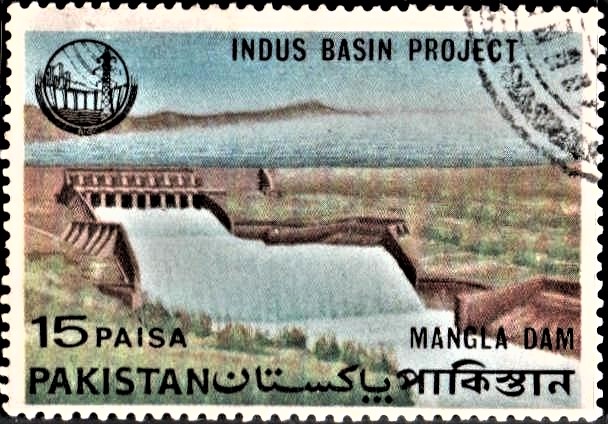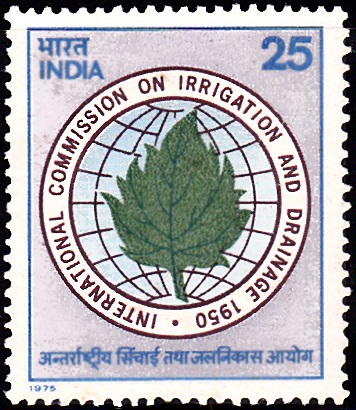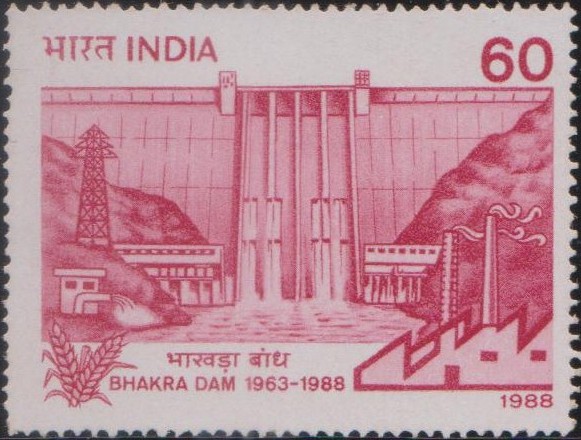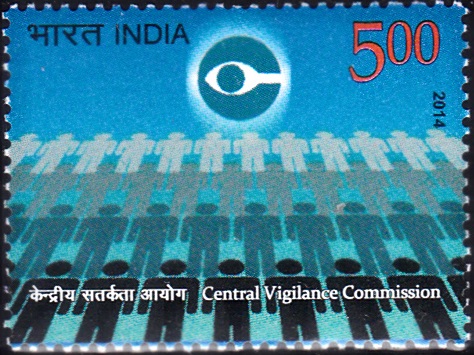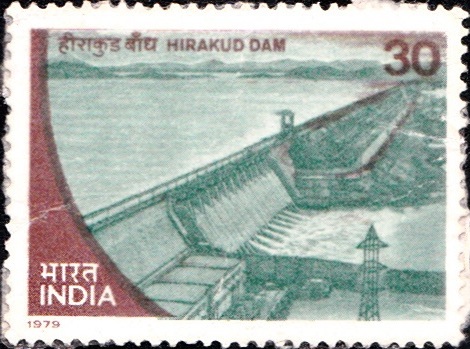
India on International Commission on Large Dams
A commemorative postage stamp on the Golden Jubilee of International Commission on Large Dams (ICOLD), an international non-governmental organization for sharing of professional information and knowledge of design, construction, maintenance & impact of large dams :

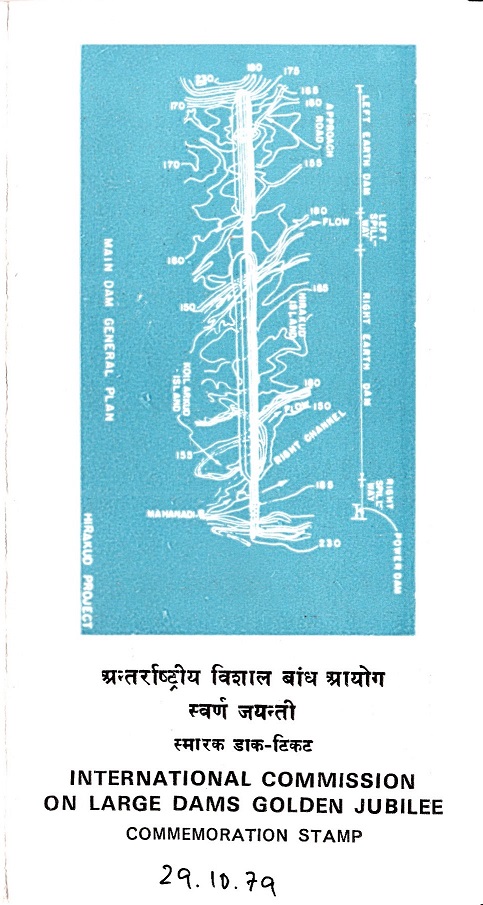 Issued by India
Issued by India
Issued on Oct 29, 1979
Issued for : Indian Posts and Telegraphs Department is happy to commemorate the Golden Jubilee Congress of the ICOLD by issuing a postage stamp.
Description of Design : An aerial view of the Hirakud Dam on the Mahanadi in Orissa State is depicted on the stamp. It is the largest earth dam in the country. It is nearly 25.5 kilometres long and 61 metres high. Its gross storage capacity is 8100 million cubic metres spread over 746 square kilometres. Besides generating power, its irrigation potential covers 253747 hectares.
Type : Stamp, Postal Used
Colour : Red Brown & Blue Green
Denomination : 30 Paise
Overall size : 3.91 X 2.90 cms.
Printing size : 3.55 X 2.54 cms.
Perforation : 13 X 13
Watermark : Printed on watermarked stamp paper
Number printed : 30,00,000
Number per issue sheet : 35
Printing process : Photogravure
Designed and printed at : India Security Press
About :
- In an agricultural country like ours, the farmers, while anxiously scanning the skies for the gathering monsoon clouds which will bring welcome showers to the parched land, cast wistful glances at the rivers, occasionally in turbulent rush to meet the sea but frequently flowing placidly on their endless journey. The attempts to harness the rivers for irrigation go centuries back to the 2nd Century A.D. when the Grand Anicut across the river Kaveri in Tamil Nadu was built. Still in good repair, this missionary weir on sand foundation is serving nearly half a million hectares. Another pioneer of storage structures on rivers in the South, Sir Arthur Cotton constructed the Godavari Anicut in 1853.
- During the last quarter of the last century three large dams, the 60 metre high Khadakvasla Dam (completed in 1879) and the 53 metre high Periyar Dam (completed in 1897) brought into its own the large storage structures on rivers for irrigation purposes. During the first half of this century, there were hardly 30 dams of 30 metre or more in height. However, since 1947 more than 270 dams of height of 30 metre or more were taken up and out of them 167 have been completed. Some of the notable large dams are Bhakra, Nagarjunasagar, Hirakud, Rihand, Tungabhadra, Gandhisagar, Ranapratapsagar, Damoder Valley dams, etc.
- In 1928 an international non-governmental organisation called the International Commission on Large Dams was set up to facilitate exchange of information and experience on planning, designing, constructing and maintaining large dams. The Commission, comprising 71 member-States at present, functions through the national committees of the participating countries. The Central Board of Irrigation & Power under the Ministry of Agriculture & Irrigation functions as the Indian National Committee. The 13th Congress of the Commission being held in New Delhi from 29 October to 2 November 1979 marks the Golden Jubilee of the International Commission on Large Dams (ICOLD).


